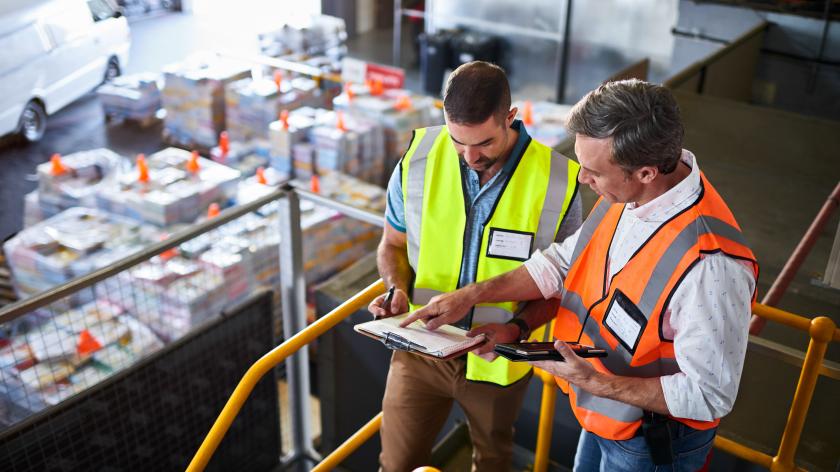What is customs clearance and why is it an essential step in international trade?
When dealing with international shipments, whether importing or exporting, the first and most important step the goods go through is customs clearance. This process includes document inspection, payment of customs duties and taxes, and ensuring the goods comply with local and international laws.
Customs clearance is more than just a routine procedure; it's an essential component of ensuring the legal and orderly flow of trade. Without proper customs clearance, your goods may be detained, delayed, or even confiscated, resulting in financial and moral losses.
Why should you care about customs clearance?
If you are a business owner or working in import and export, your understanding For customs clearance Contributes to:
- Speed up shipping and receiving processes
- Reducing costs resulting from errors or delays
- Avoid fines or customs violations
- Improve your company's reputation as a reliable supplier or importer.
Basic documents for customs clearance
Every customs clearance process relies on a set of documents that must be carefully and professionally prepared. The most important of these are:
1. Commercial Invoice
A document containing details of the goods, price, quantity, and the sender and recipient.
2. Packing List
Detail the contents of the shipment, such as the number of cartons, the type of materials, and the packaging method.
3. Bill of Lading (Air Waybill)
It serves as a contract of carriage between the shipper and the carrier, and is proof of ownership of the goods.
4. Certificate of Origin
It identifies the country in which the goods were manufactured, and affects customs duties according to trade agreements between countries.
5. Special permits or certificates
For some goods, such as food, medicine, or electronics, health or technical permits may be required before they are allowed to enter.
Customs clearance process steps in detail
1. Arrival of goods at the port or airport
Once the shipment arrives, customs procedures formally begin. It's important to have your paperwork ready in advance to avoid backlogs or late fees.
2. Submitting the customs declaration
This form is submitted to customs and includes all details of the goods and shipment. It is preferable to submit it electronically using modern systems to save time and reduce errors.
3. Calculating customs duties and taxes
The Harmonized System (HS) code determines the applicable customs duties and taxes. The more accurate the customs classification, the closer the actual cost will be and the less surprises will be.
4. Customs inspection and examination
In some cases, goods are randomly or compulsorily inspected. It is recommended that your representative or customs clearance company be present to oversee this step and ensure proper procedures.
5. Payment of fees and release of goods
Once all dues are paid, you receive a customs release authorization and can transport the goods to your warehouse or customers.
Differences between import clearance and export clearance
Although the basic steps are similar, there are some important differences:
- Import: Imported goods require careful inspection due to the sensitivity of the local market, especially for food and medical goods.
- Export: This is usually simpler and faster, but it is no less important in terms of the accuracy of the paperwork, as it affects the acceptance of the goods in the importing country.
Which brokers can help you?
1. Customs clearance companies
These companies specialize in handling customs on your behalf. They have expertise in local laws and can expedite the process and avoid delays.
2. Freight Forwarders
They arrange door-to-door transportation and can also integrate customs clearance services into the complete package.
Common challenges in customs clearance
- Invoice does not match actual goods
- Delay in issuing certificates or permits
- Sudden changes in customs laws
- HS Code classifications vary between countries.
Avoiding these challenges requires constant monitoring and ongoing communication with the customs clearance company and suppliers.
Golden tips to facilitate the customs clearance process
- Don't wait for the goods to arrive to prepare the paperwork.
- Check your country's customs laws regularly.
- Check the costs involved before shipping to avoid surprises.
- Use the services of reputable companies with reliable past experience.
- Keep archived electronic copies of all documents.
Can you do customs clearance yourself?
Yes, this is possible in some cases, especially if your shipment is small or if you are a personal importer. However, if the goods are large, diverse, or require special permits, it is best to delegate this to a specialized agency.
If you would like to learn more or confirm the latest customs laws in your country, you can visit the website of the World Customs Organization (WCO), the body responsible for setting global standards in the field of customs clearance and international trade:
🔗 World Customs Organization - WCO
Customs clearance is not just a minor step; it's an essential part of a successful import-export cycle. Understanding this process, preparing for it, and choosing the right partners can save you time, reduce costs, and protect you from legal complications.
Whether you're new to international trade or experienced, always keep your information up-to-date and keep up-to-date with customs changes to ensure smooth, hassle-free shipments.

